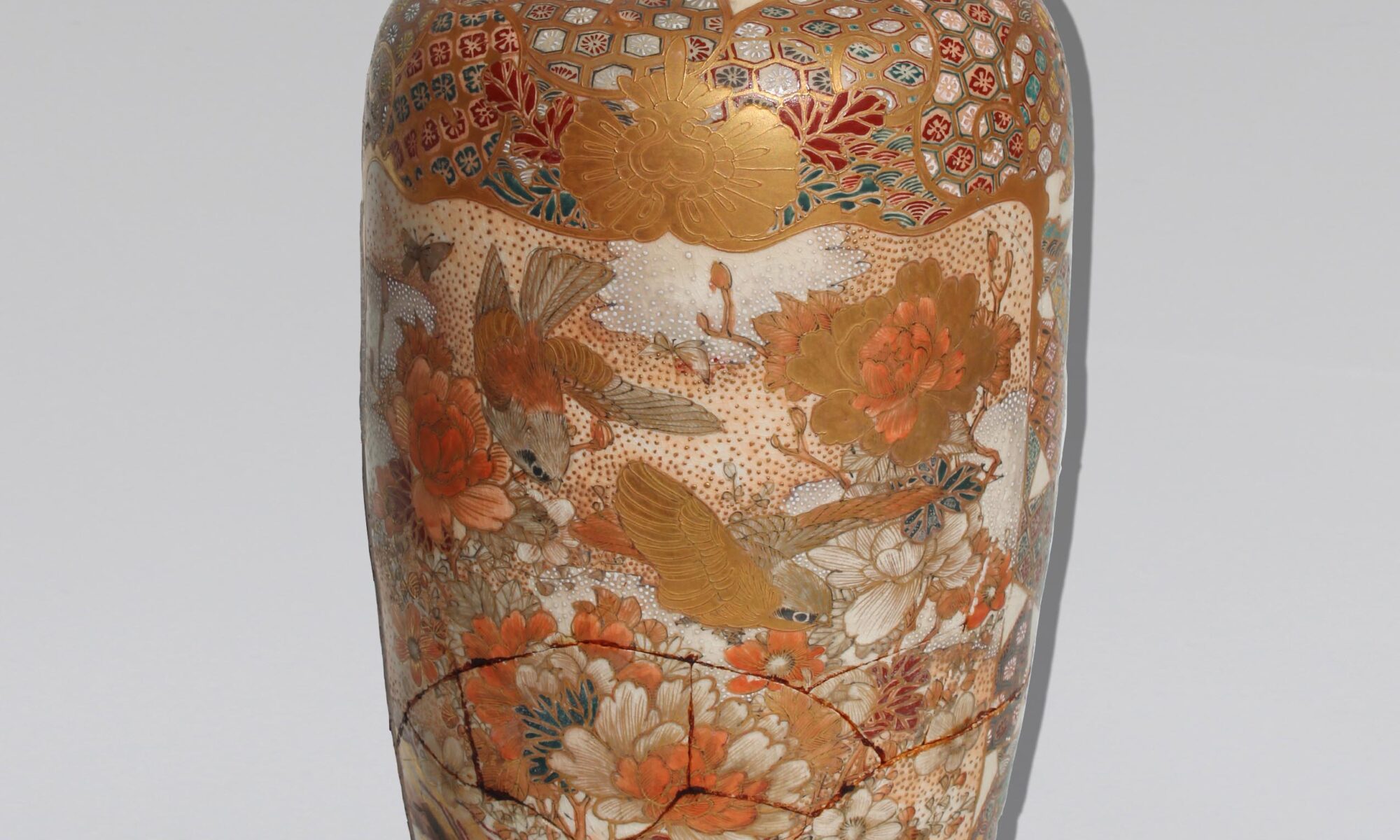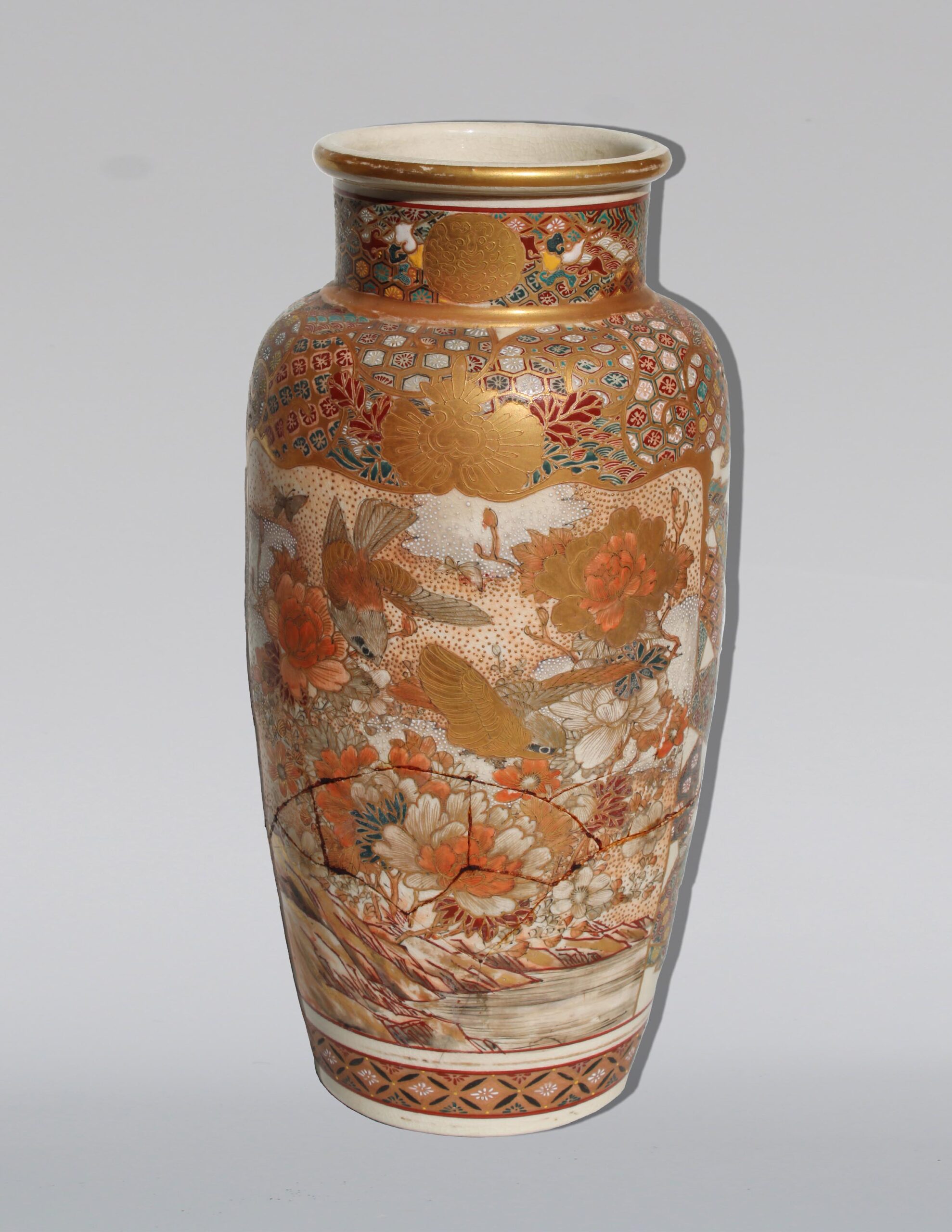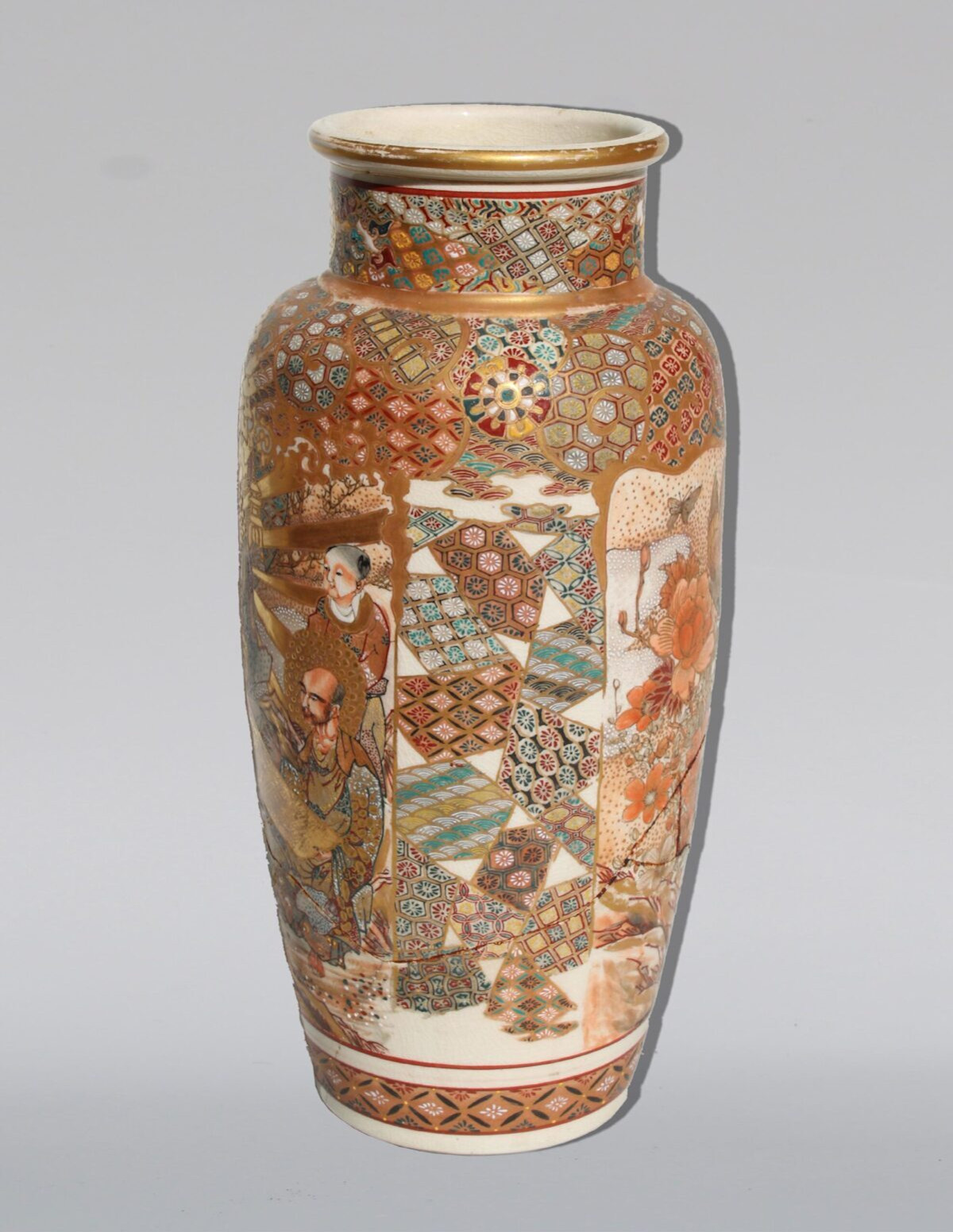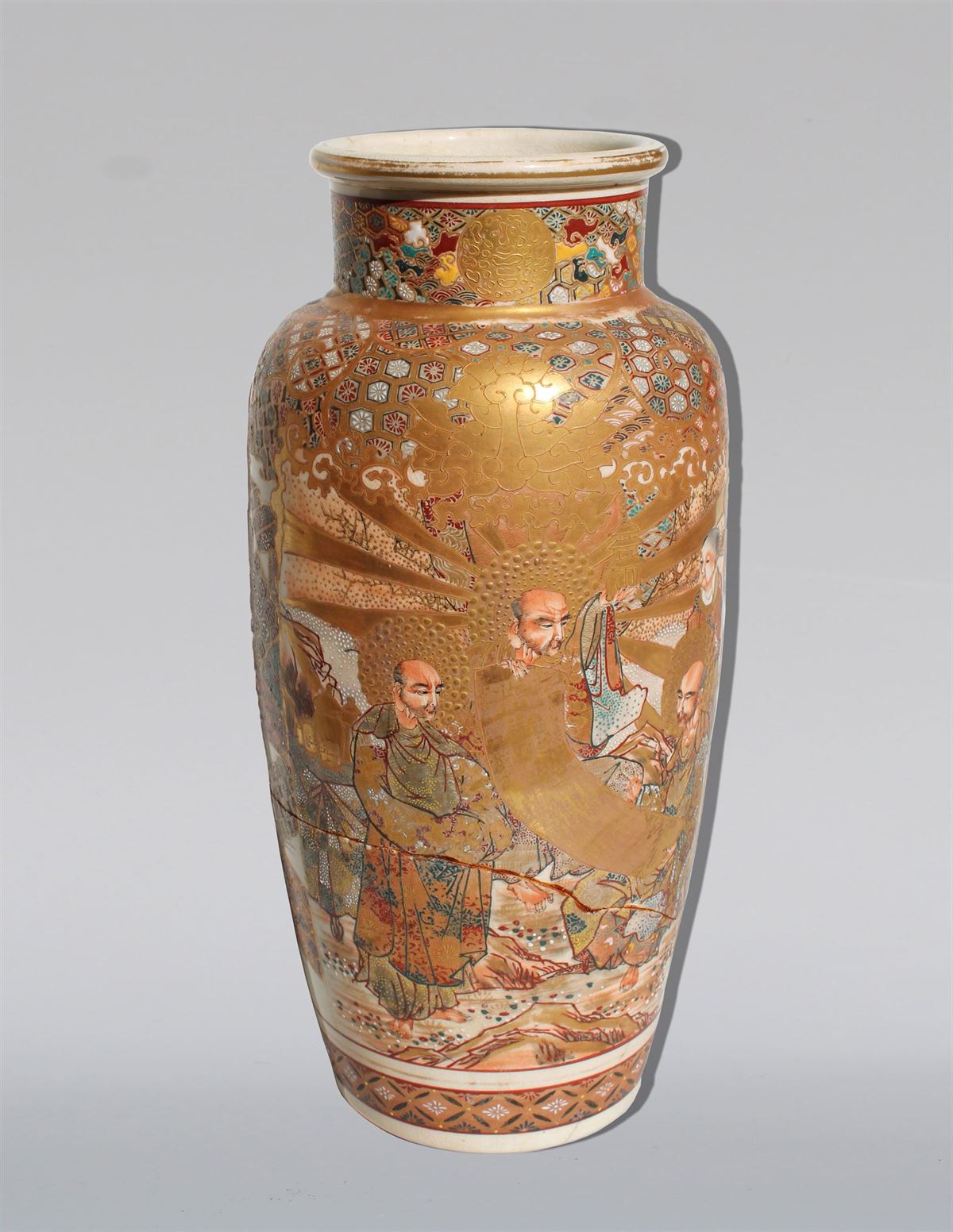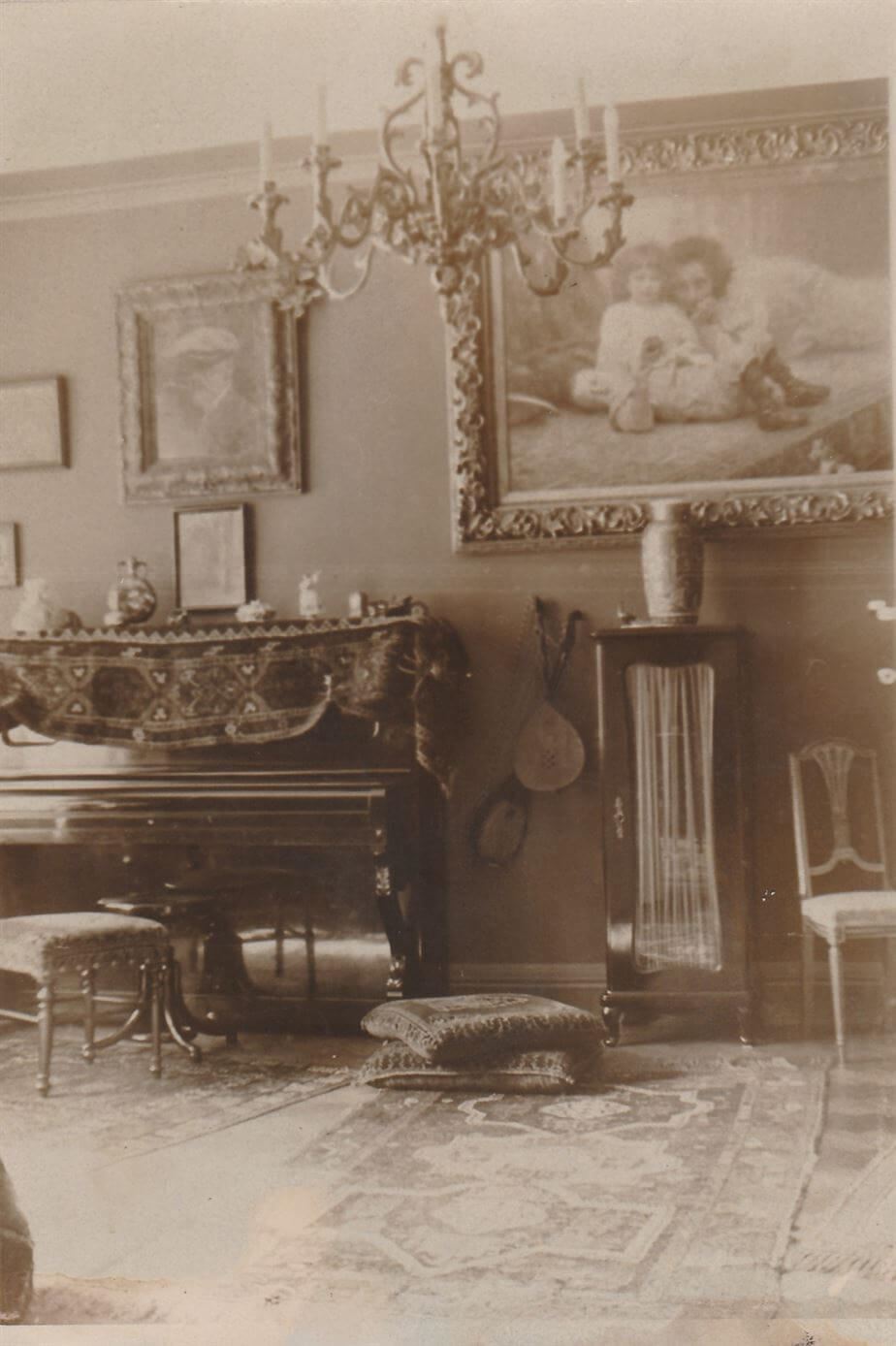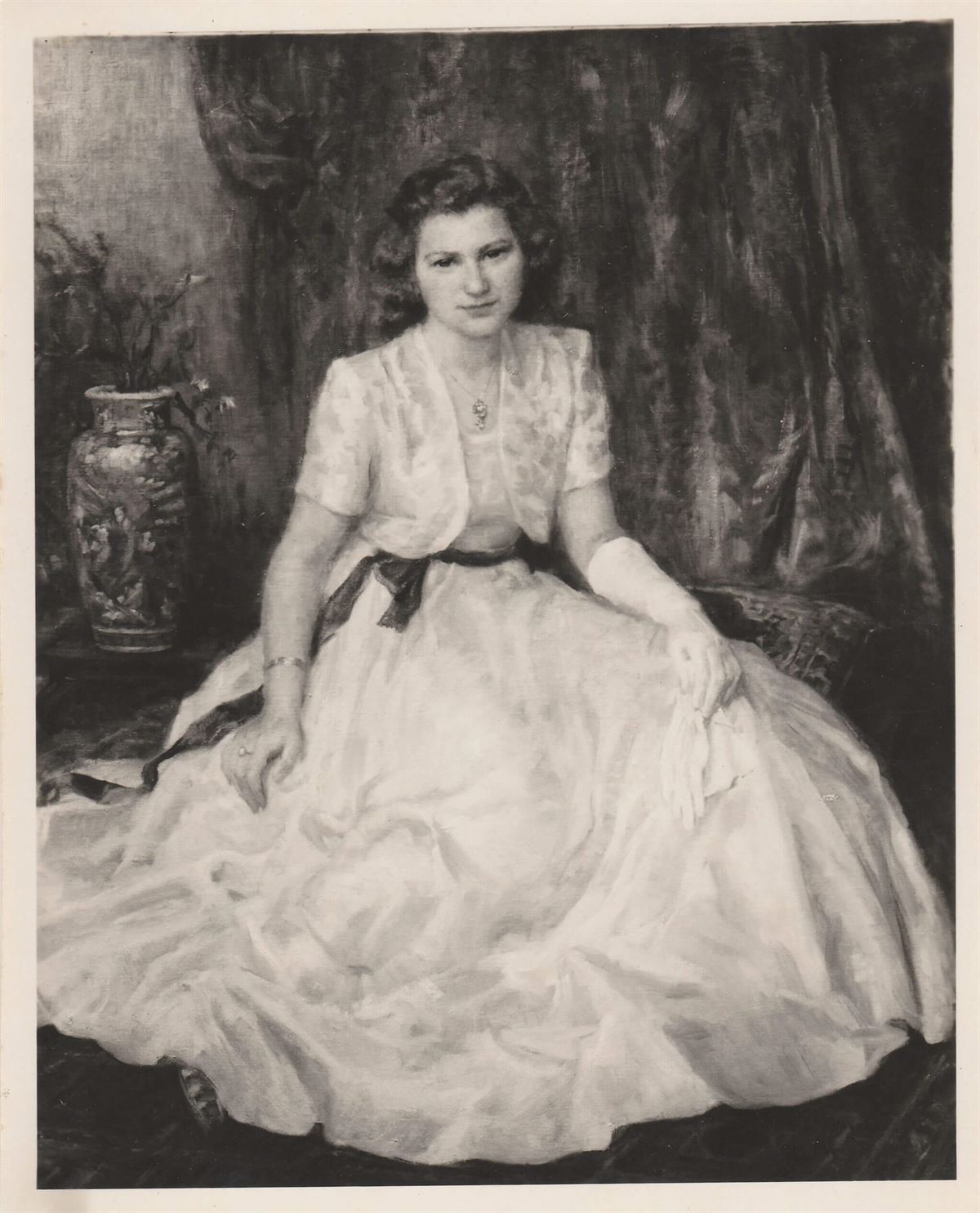tablica
| Inventory number: KB-370 |
| Material: stone clay |
| Dimensions: height 40 cm, diameter 20 cm, base 12.7 cm |
| Dating: from 1868 to 1912 |
| Origin: Japan |
The vase is divided into two white fields in the central part, painted with floral and animal motifs (birds), as well as human figures. It is framed with a golden border and bands featuring botanical and geometric ornamentation. Warm ochre, green, and golden tones prevail. The lower part of the vase is broken into multiple pieces that have been glued together.
Satsuma ceramics are specific for its particular decorating technique, called moriage, which is a type of enamelling. Moriage is the term used to describe the delicate layering or application of clay onto parts of ceramic.
The problem with our example is that there is no identification mark on the vase, so we cannot determine the year and artist with certainty. It roughly dates back to the late 19th century or the beginning of the 20th century (1868 – 1912, Meiji period) because it was then that Satsuma ware, that is, Japanese ware as such, appeared for the first time at European exhibitions and was exported for sale.


